![]()
The Lancashire Witch Trials of 1612, that saw twelve people accused of witch craft, has throughout the ages continued to fascinate people from all around the world.
Many books have been written about the now infamous, ‘Pendle Witches’ but none so relevant as the one written by a man called Thomas Potts, the clerk to the court at the Lancaster Assizes where the trials took place on the 18th and 19th of August 1612.
His book, The Wonderfull Discoverie of Witches in the Countie of Lancaster is quite extraordinary in detail as it outlines what took place all those years ago. It takes into account the complete story of not just the Pendle witches but also those known as the Samlesbury Witches which saw in total, twenty men and women being accused of witchcraft with eleven being found guilty and subsequently hanged and one being sentenced to stand in a pillory (a device made of a wooden or metal framework erected on a post, with holes for securing the head and hands and was used as a form of punishment by public humilation and often physical abuse). The other seven were eventually acquitted.
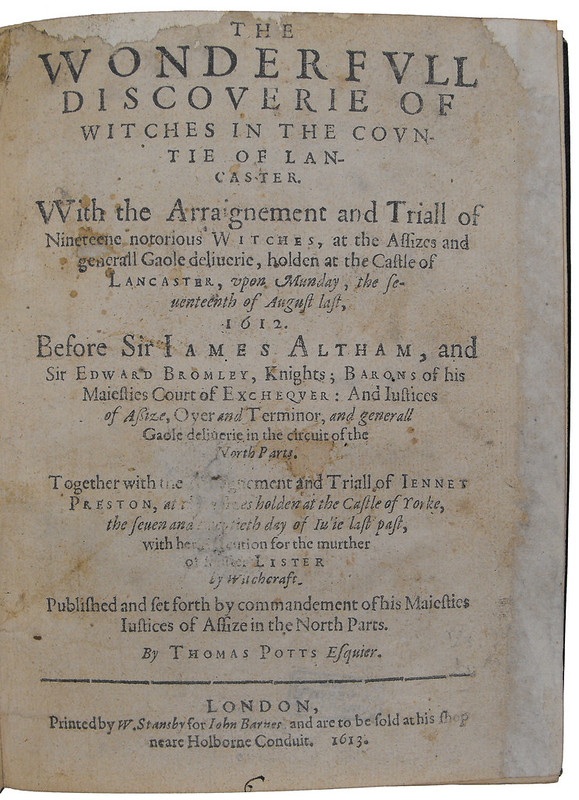
But it isn’t the Pendle witches or the Samlesbury witches that have perked our interest for our next story.
Instead, we are going to take a step back into 1705 and to the small village of Woodplumpton that is situated in the City of Preston, Lancashire.
Within the small graveyard of St. Anne’s Church, there is a large boulder that can be found alongside a path which seems to be out of character amongst the old headstones and that of the 13th Century church.
And alongside this boulder is a small plaque with an inscribed message that simply reads; “The Witch’s Grave. Beneath this stone lie the remains of Meg Shelton, alleged Witch of Woodplumpton, buried in 1705.”
Margery Hilton, or “Meg Shelton” and “The Fylde Witch” as she was and still is known as, was by all accounts a loner who would prefer to be in her own company rather than mix with the locals of the village and was often looked down upon as a figure of fun.
Surviving mainly on haggis (which was in common use at that time in Fylde), made from boiled groats and herbs such as thyme and parsley, Meg was a poor woman – a beggar by all accounts, and was known for her shape-shifting abilities which, if stories are to be believed, allowed her to change into all manner of things ranging from animals and various kinds of inanimate objects.
It’s unclear as to where Meg had lived as many stories will say she had lived in a small cottage in the village of Singleton, whereas others will say she lived in nearby Catforth, less than an hour’s walk away from Woodplumpton.

However, one story that we have uncovered is that of Mrs. Margaret Parr who was a native of Catforth and who lived until the age of 91. The daughter of a farmer, she lived her whole life working on the farm and was a familiar figure often seen with her horse and cart travelling between Catforth and Elswick. She would tell stories of how the Corn Laws had affected her family, as well stories of the Lancashire Martyrs. But the one thing that she found hard to deal with during her life in the late 1600s was the difficulty in practicing her religion as a Catholic.
Interestingly, she would on many occasions recall living close to Meg Shelton, which, as already mentioned, was in Catforth.
But no matter where she lived, the stories of Meg all agree on one thing; she was a lady who would cause, it seems, plenty of mischief!
Now we have to remember that Meg had lived her life during turbulent times when it seemed that trust (and distrust) between neighbours and of course strangers was still at an all-time high. The Pendle Witch trials, whilst they had occurred many, many years before hand, had left a devastating mark on the land and in particular the North of England.
And talk of witchcraft was still very much prominent, perhaps more so in close-knit communities, and for people like Meg, who would often be treated like an outcast, life was at times harsh and brutal.
Meg, for all matters-and-purpose, was indeed a ‘hag’ in that is seems she was described as being an ugly, old lady with an evil look about her. She had lived in a rented cottage called Cuckoo Hall, which at the time was a place of poverty or a ‘hovel’ as one old newspaper in 1889 reported, and her neighbours even regarded her with dread.
The stories of Meg seem to range from the silly to absolutely outrageous, and to make matters worse for Meg, she had suffered from a pronounced limp which marked her out for even more ridicule and mockery than most.
It was said that the story surrounding her ‘limp’ was because she had made a bet with the Lord of Cottam, Squire – William Haydock, telling him she could produce a hare on command which could out-run his dogs on his estate in Woodplumpton, near to Cottam Hall. It is said that the Squire had bemoaned the lack of hares on his land and that is how the bet came about.
As for the bet, it was a pretty simple one at that; if Meg won, the Squire would provide her with a new cottage on his land in Woodplumpton. However, it’s unclear what the consequences would have been if she had lost the bet.
Also, one of the conditions of the bet was that the Squire would not release a large and fierce dog that he owned, with Meg telling him it was far too dangerous to do so.
As you can probably guess, the Squire didn’t honour this request, releasing his black hound and in doing so, and after the hare had indeed made it to Meg’s cottage first, the dog bit into the hind of its leg. Meg not too long after appeared at the door, seemingly limping, which she did for the rest of her life.
Another story goes on to tell of how, when transformed into a rabbit, Meg was attacked by a black dog released by a farmer after he saw her (or the rabbit) running through one of his fields. His dog, just as in the story of the William Haydock, attacked Meg just as she had made it to her cottage.
In the words of the Stonyhurst Buck-Hunt, written in 1712 by Mr. Cottam, of Hurst Green; “The hounds uncoupled on the plain, A mortal war did straight proclaim.”
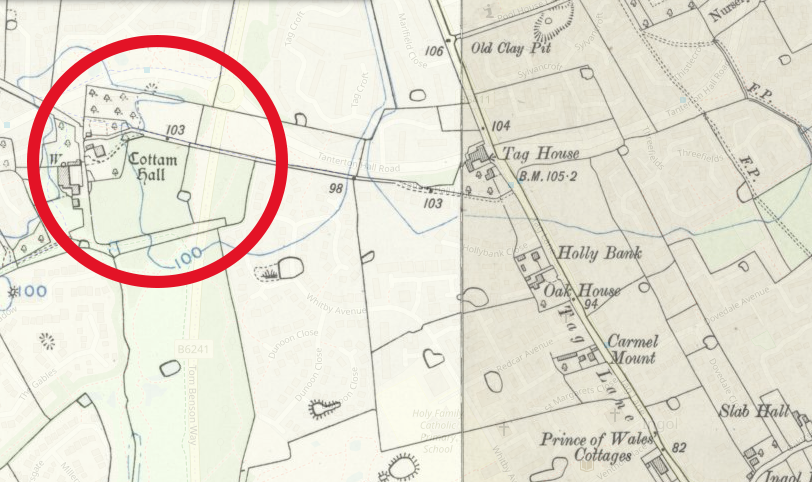
Perhaps the most telling story though is that of a hunter who released his hound after seeing her running through a forest. The hound caught her leg, snapping the bone and in doing so, it broke a spell, turning Meg back into human form. It was in human form that she caught the hound and proceeded to strangle it until life was extinct.
She had walked lamely ever after and would become the target of all those she came into contact.
Stories of how she would ‘prank’ people are still spoken to this day and it seems that whenever any misfortune occurred in the neighborhood during her lifetime, it would always be attributed to her.
Farmers would complain of how their milk had turned sour, of their cattle being lame and also of some of their cows having been milked without their consent!
One story goes on to tell of how Meg was met by a country man whilst she was directing a goose in front of her. The path she was walking along was narrow, and the goose would not get out of the way of the man.
The man had a stick in his hand and began to strike at the goose and to his amazement, the goose changed into a broken pitcher with milk seemingly flowing from every side.
Had Meg Shelton stolen milk from a nearby farm and turned this pitcher into a goose? It’s seem an extraordinary tale but this story is still talked about today!
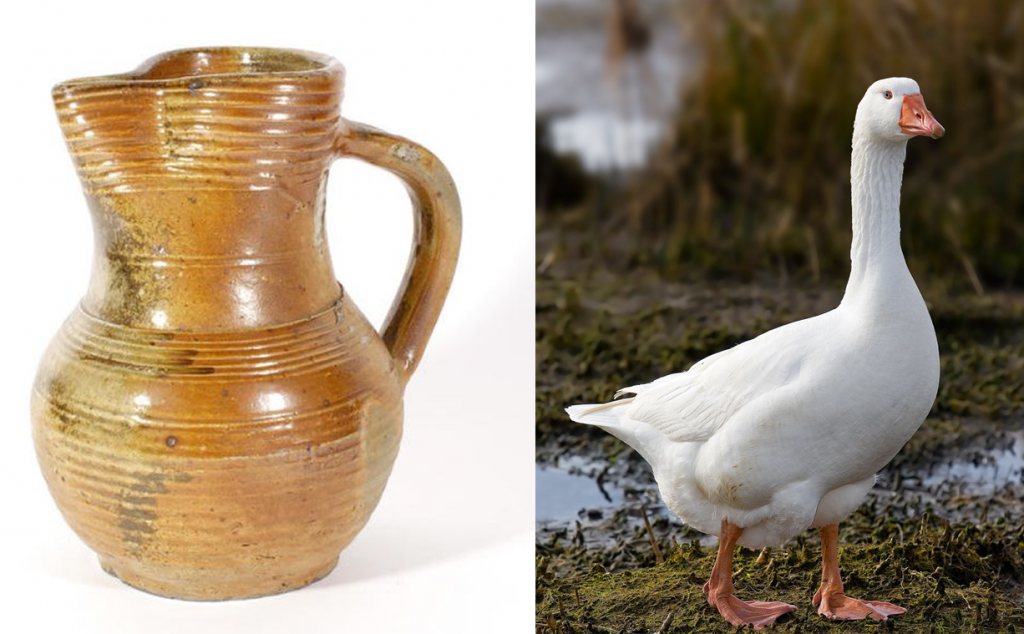
For anyone who has heard the tales of Meg Shelton, and many have been passed down through the generations, then this next story will not come of a huge surprise, but to those still unacquainted with such tales, then they may find it slightly amusing.
The story goes to tell of how Meg transformed herself into a sack of corn and hid inside a farmers barn so she could steal some food.
Unfortunately for Meg, the farmer was far to experienced and had noticed that he had one sack too many. Having heard the tales of Meg Shelton and how she could manipulate herself into inanimate objects, he began to prod at each of the sacks using a pitchfork.
Making his way through each bag of corn, a loud shriek reverberated through the barn when he struck the bag in which Meg had transformed into it. Returning to human form, Meg fled the scene, returning back to her little cottage at Cuckoo Hall.
On another occasion, it seems Meg was foiled when after a farmer suspected one of his cows had been bewitched, his daughter managed to talk Meg into the farm and after seating her in the “ingle neuk” or the recess of a fireplace, a bodkin crossed with two weavers’ healds was placed on the floor next to her. With this in place, Meg was powerless to escape!
“Oo shonna shift naa fayther, ti’ oo’s t’en ‘or een o’th coo,” said the daughter as she heaped turf and wood on the fire till the flames roared fiercely up the chimney.
The heat grew more and more intense until Meg was nearly roasted!
Her screams found no compassion until she removed the enchantment from the bewitched cow and she was later allowed to leave the farm, albeit it shook up from her ordeal.
It was said that after this encounter with the farmer and his daughter, she could no longer live safely at Cuckoo Hall and so this is why the bet with the Lord of Cottam was made, which would allow her to live at Cottam Hall should she win.
Strange to say, but when Meg was missed from her accustomed “haunts” and several days had passed without anyone seeing her, the door to her cottage was broke open.
Poor Meg was found discovered crushed to death between a barrel and a wall and it didn’t take long for the gossips unanimously declaring that the devil had claimed back `one of his own`.
On the 2nd May, 1705, Meg’s body was later buried by torchlight at the western end of the churchyard at Woodplumpton, close to the end of a footpath. But it seems that the restless spirit of Meg was not going to lie peacefully!
On one occasion, her body was found on the soil early one morning, and despite her body being interred again, it would re-appear overnight.
A priest would soon be called to lay her spirit to rest at Cottam Hall, and as for Meg Shelton, her body would be re-interred one last time, but this time she would be buried upside down inside a narrow opening, and a large boulder placed over her grave, thus preventing her body from returning from her ground again.
Some locals had suggested that her body be turned upside down so, if she was to ever try to claw her way back out of her grave, she would only end up digging her way down towards hell, such was the panic instilled on the people of Woodplumpton.
The story of Meg Shelton is an interesting one, and the one thing that clearly comes across is that, at the end of the day, she was just a poor woman struggling on through life. She may have been a little eccentric in her ways, and yes, she perhaps did steal milk, eggs, even the odd hen from local farms, just so she could survive. And it’s interesting that, although she has over the centuries been labelled as a ‘witch’, it’s extremely hard to find any stories of her actually casting spells or bringing ill-health to anyone, unlike in the stories of the Pendle witches!
There are also some questions left unanswered, perhaps the obvious being why, if she was a witch, was she buried on consecrated ground?
Another question I often ask myself is, why, if she could claw her way out of her grave, would she just lay on the ground after successfully making her way out? Why would she hang around waiting for someone to see her? Of course, we have to take the stories of Meg digging her way out of her grave with a pinch of salt and its more than likely that her body was dug up by some unscrupulous local or locals simply to reinforce the story of Meg being a witch. Why? Well, we will never know.
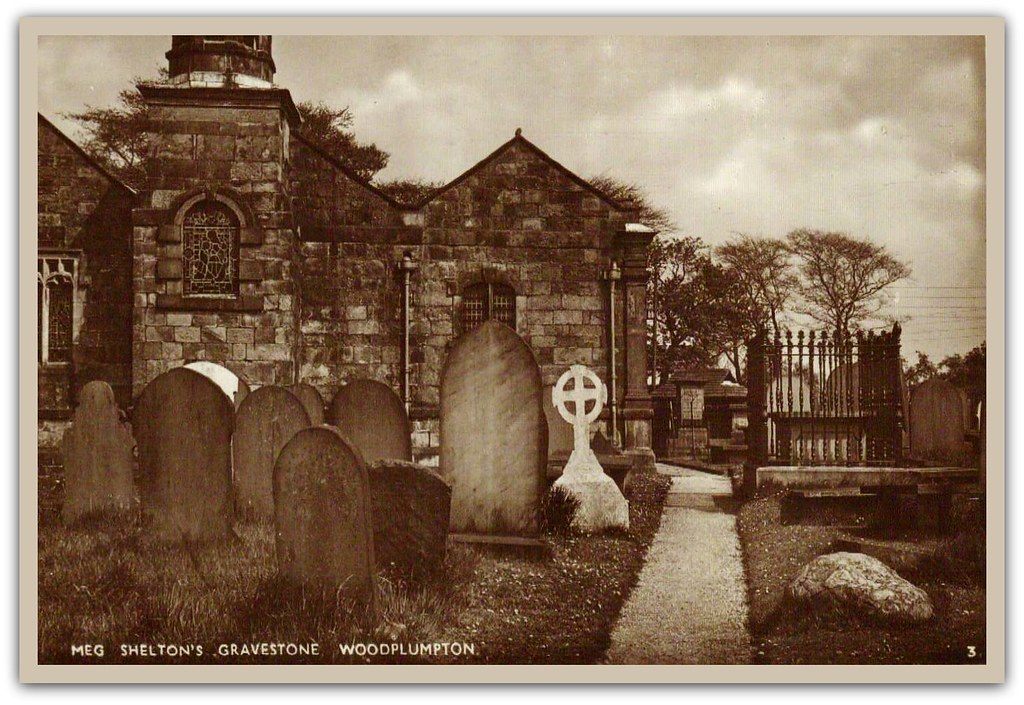
And as for the cause of her death. We know she was an old lady, that’s safe to say. And she walked with a severe limp which would have hindered her throughout her life. So perhaps it’s not out of the realms of possibility that somehow a barrel had been dislodged and she could not get out of the way quick enough, resulting in the barrel pinning her up against the wall. However, there is another variation of this story and one that mentions poor Meg perhaps being murdered by a disgruntled farmer whom she had stolen from. She may have even been murdered by frightened locals who then pinned her body up against the wall just to make it look like an accident?
Again, we will never know the truth.
For me, I think Meg was a slightly crazy old lady who stood out amongst a crowd simply because of how she looked, how she walked and how she behaved. And because of these things, she had become hated by those she came into contact with, resulting in years of abuse and possibly ‘torture’ at the hands of spiteful villagers.
Today, it is said that if you walk around the large boulder that still resides on the grounds of St. Annes Churchyard at Woodplumpton, three times, reciting the words; “I don’t believe in Witches’, the hand of Meg Shelton will appear from the ground below you, trying desperately to drag you down into the depths of hell.
If you so wish, tales also tell us that if you walk around the boulder three times naming a wish, it will almost certainly be fulfilled and if you look closely enough, you can see the footmarks on the ground where people have walked around.
So if you ever visit the final resting place of the ‘Last of the Lancashire Witches’, why not try one or two, if not both, incantations if you dare!
Sources used in this story;
Lancashire Evening Post – Wednesday 09 January 1935
Fleetwood Chronicle – Friday 18 February 1955
Blackpool Gazette & Herald – Friday 25 January 1889
Lancashire Evening Post – Wednesday 25 January 1935
+ many more courtesy of the British Newspaper Archive – www.britishnewspaperarchive.co.uk and www.ancestry.co.uk
Please follow me on social media;
Twitter – https://twitter.com/dohpods
Instagram – www.instagram.com/dohpods
Youtube – https://www.youtube.com/c/DaysofHorrorPodcast
Music;
Contact – The Tower of Light – No Copyright Music
October Night’s Part One – CO.AG Music
Mysterious Ambient Background Music – The Rake

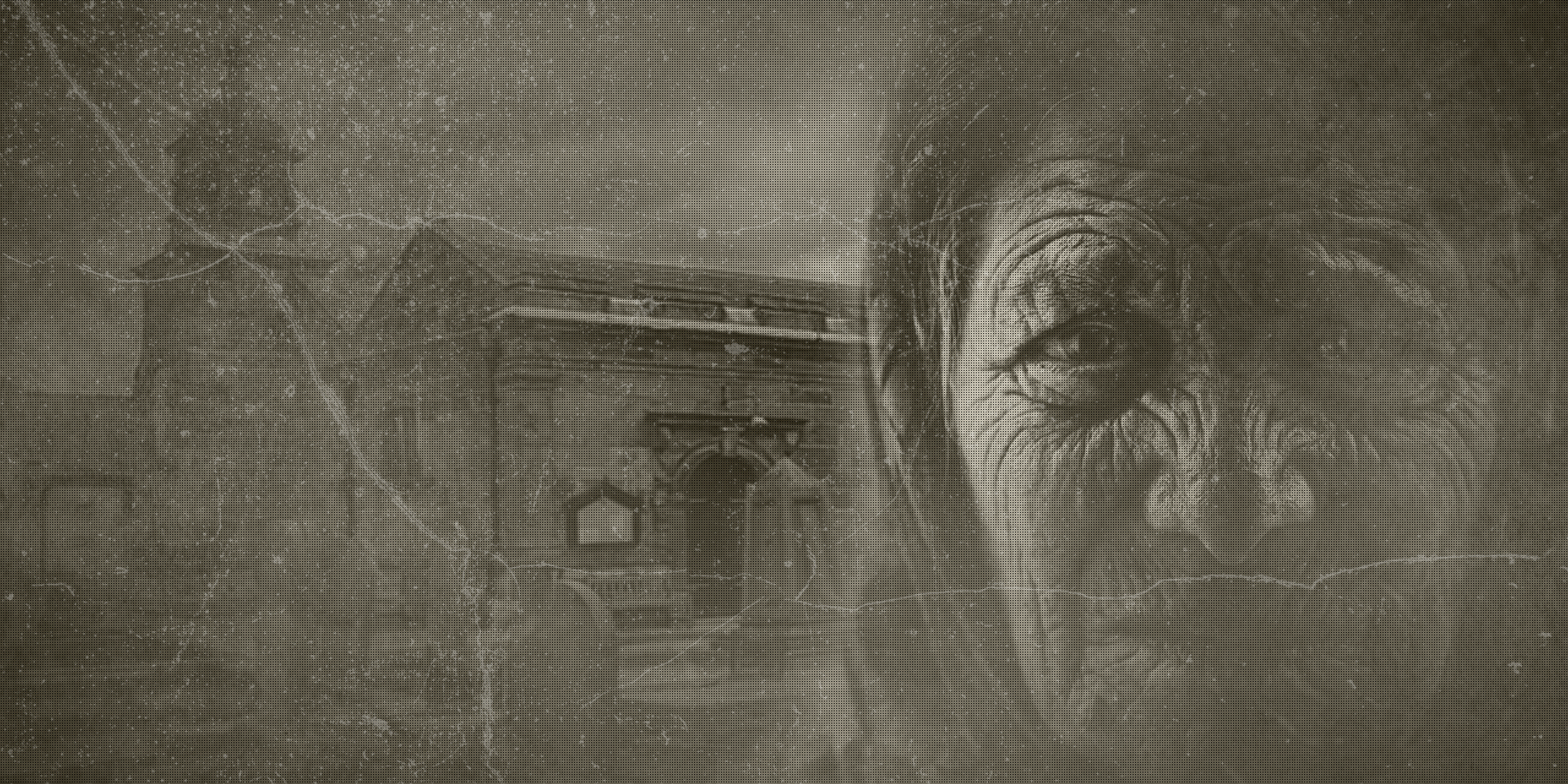
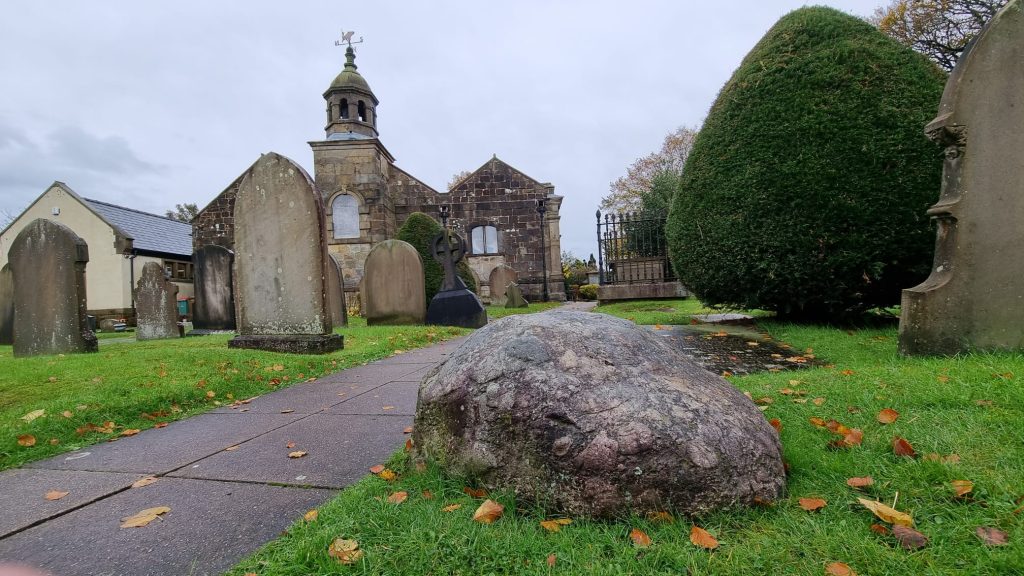
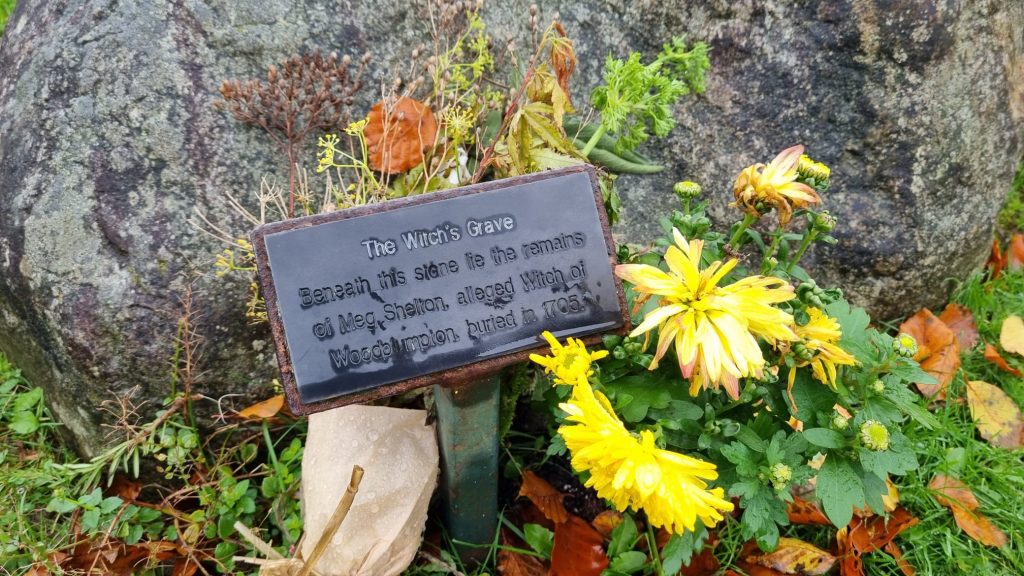
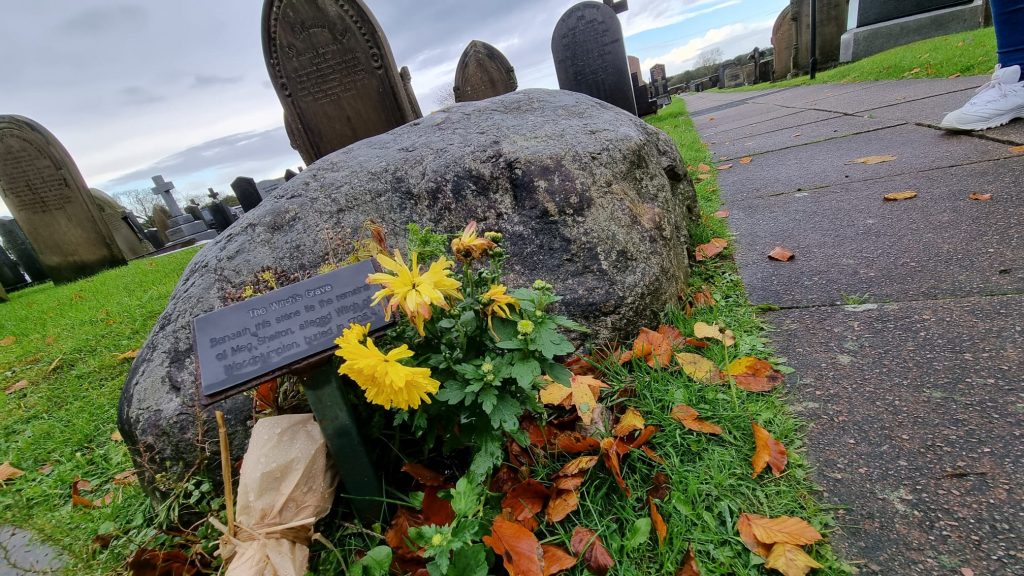
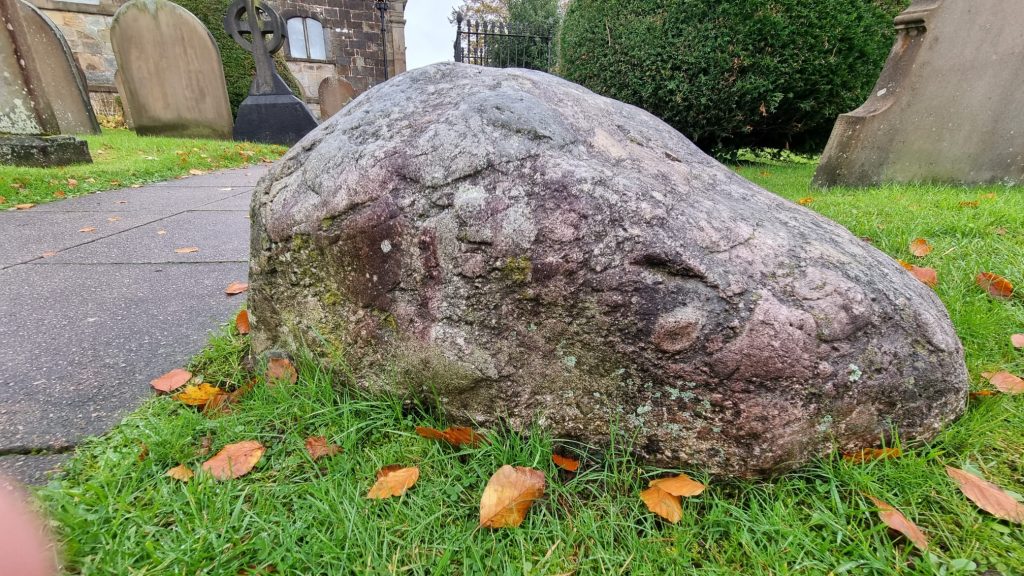
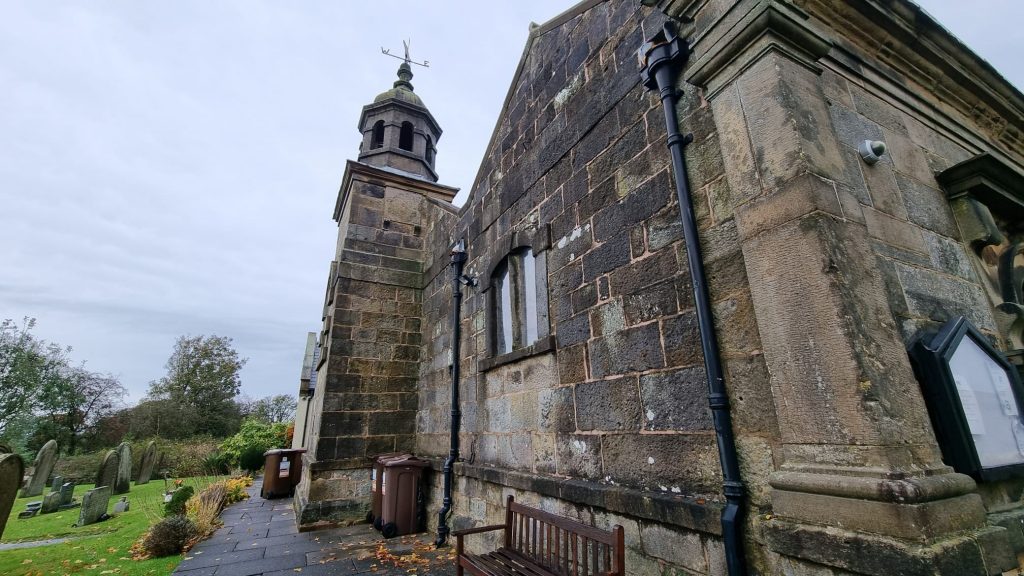
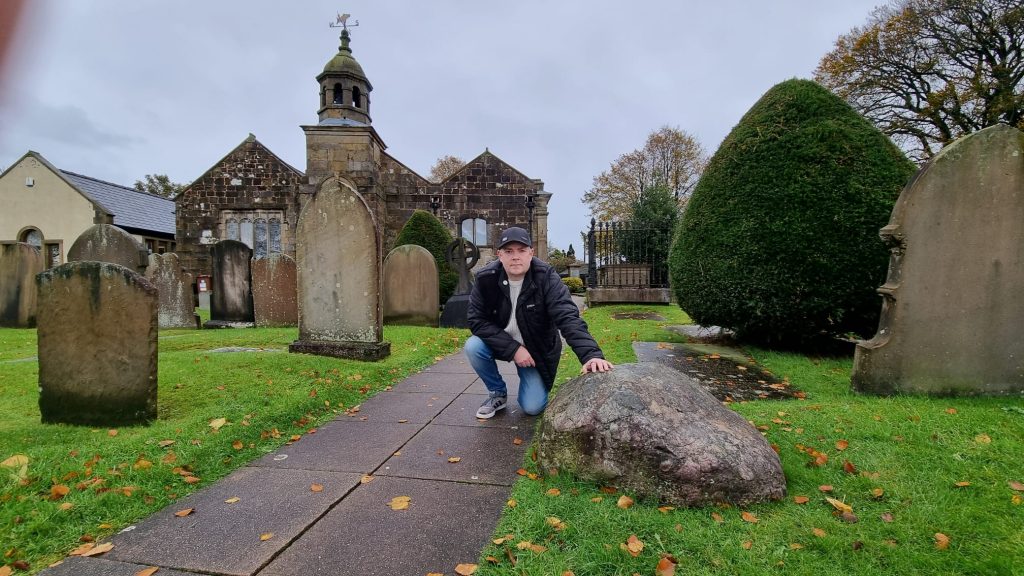
Leave a Reply to Laurie Manton Cancel reply